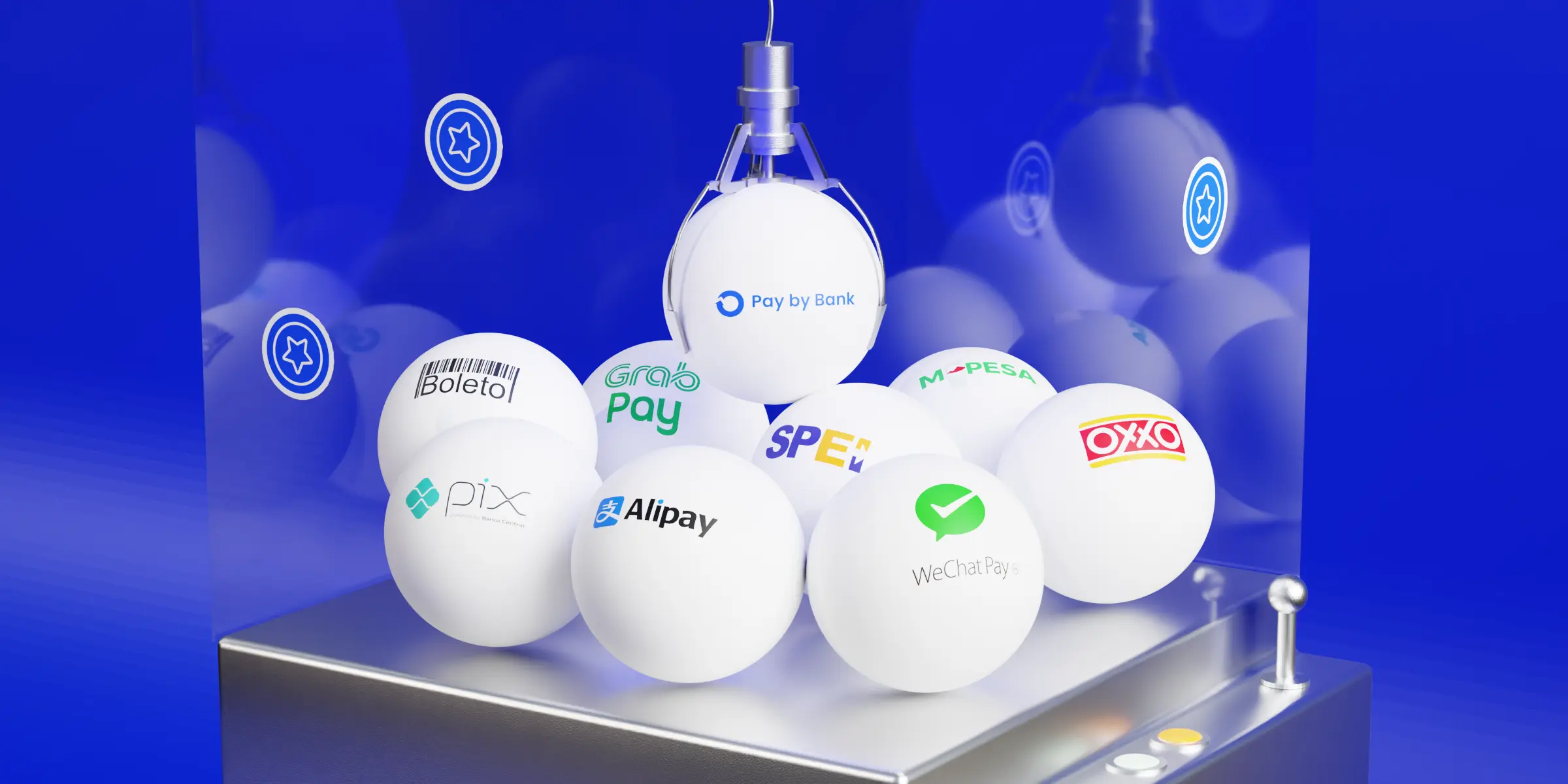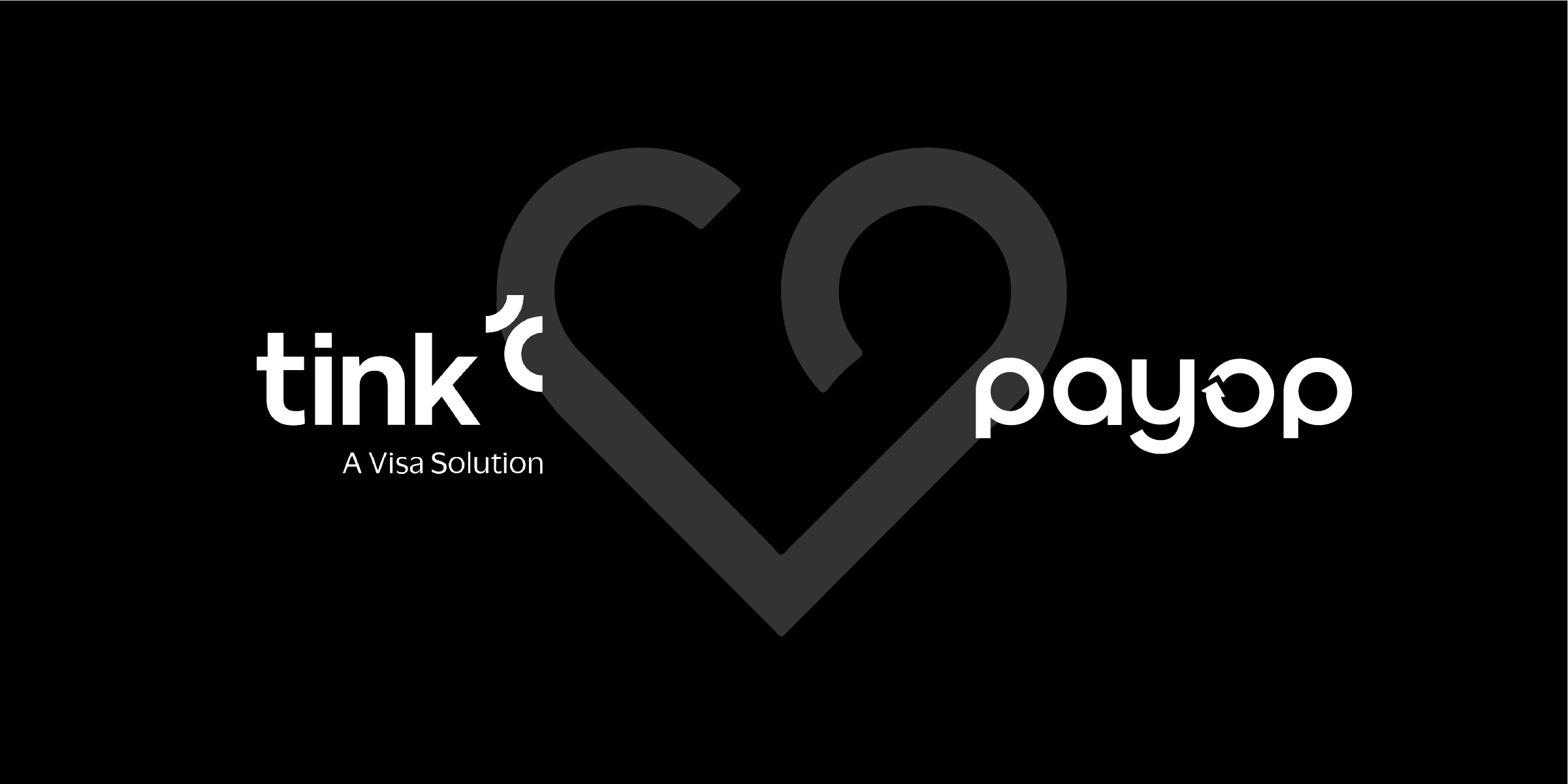Payment trends in Europe in 2024
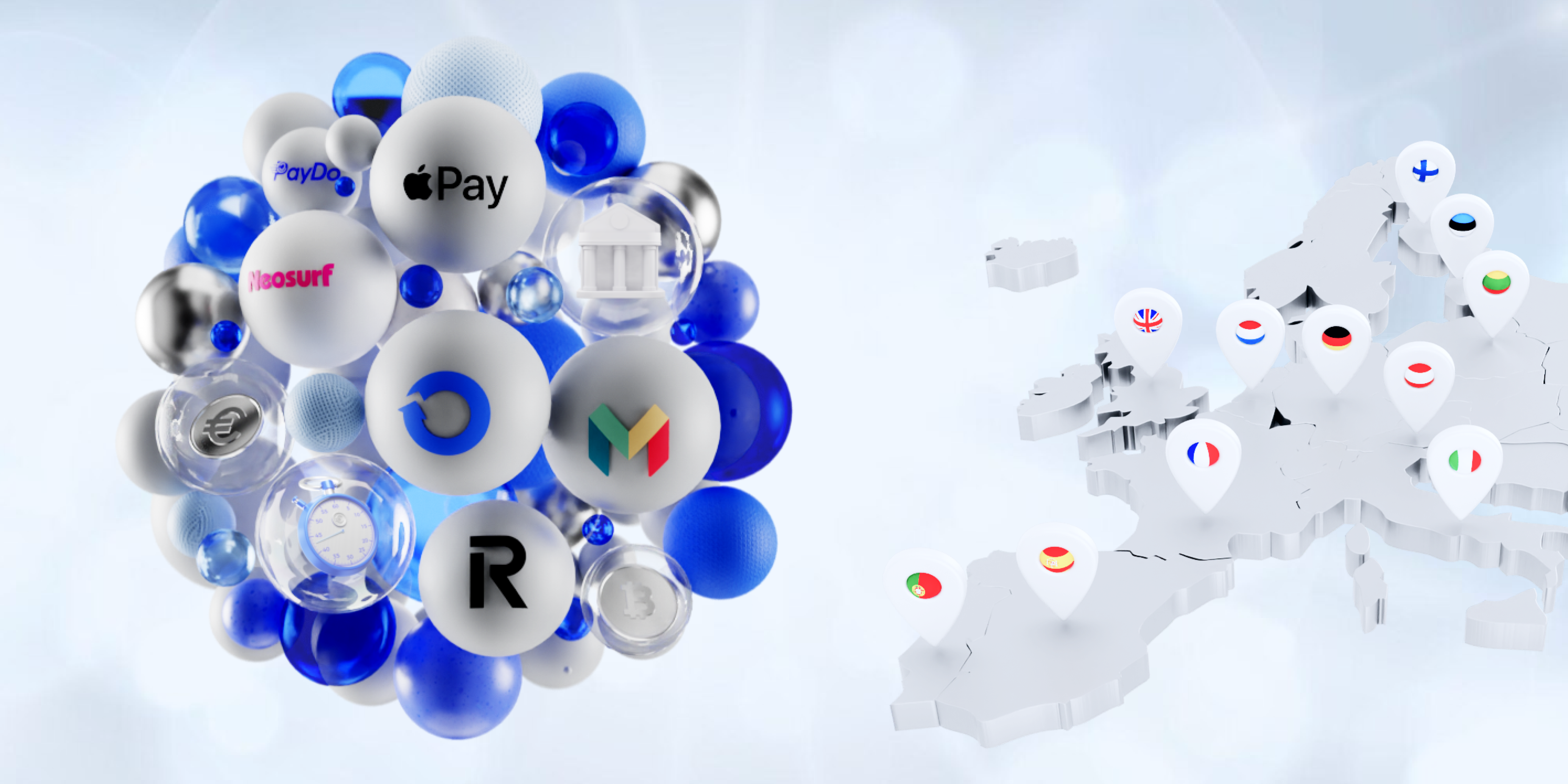
The payments industry is growing faster than ever, and Europe is, in many ways, driving this progress. For businesses, this means constantly adapting to new customer payment preferences. Those who neglect to do so in such a competitive market risk losing customers.
In this article, we put together the most relevant payment trends in Europe and recommendations on what your business can do about them.
Digital payments
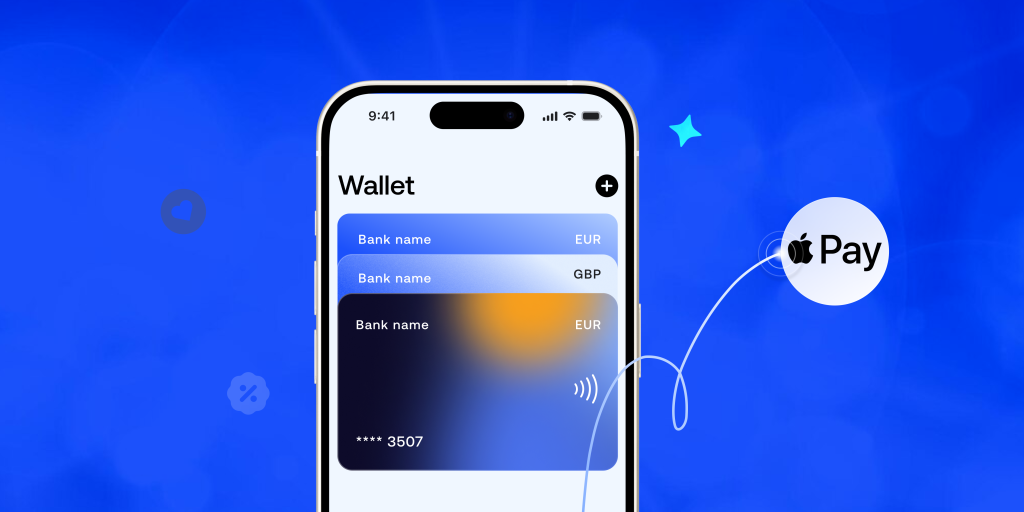
In 2024, mobile wallets like Apple Pay became necessary, especially among younger consumers who appreciate their convenience, security, and integration with other apps. Over 60% of younger Europeans (ages 18-35) now rely on this method for everyday transactions.
It’s easy to see why – integration of mobile wallets with loyalty programs, online stores, and even government services makes them an obvious choice. With countries like Sweden and Finland leading Europe to a near-cashless society, digital payments will continue to gain popularity.
Instant payments

Waiting days for a payment to clear is becoming a thing of the past, thanks to the rise of instant payments. The SEPA Instant Credit Transfer (SCT Inst) scheme allows payments to be processed in real-time, 24/7, anywhere in Europe.
While the adoption of instant payments has its obstacles, as businesses increasingly demand faster payment settlement, the availability of SCT Inst is expanding across Europe. Countries such as Spain, France, and Italy are rapidly adopting the scheme, with the European Central Bank pushing for broader adoption.
Instant payments provide a competitive advantage for businesses by improving cash flow and reducing reliance on credit.
Buy Now, Pay Later (BNPL)
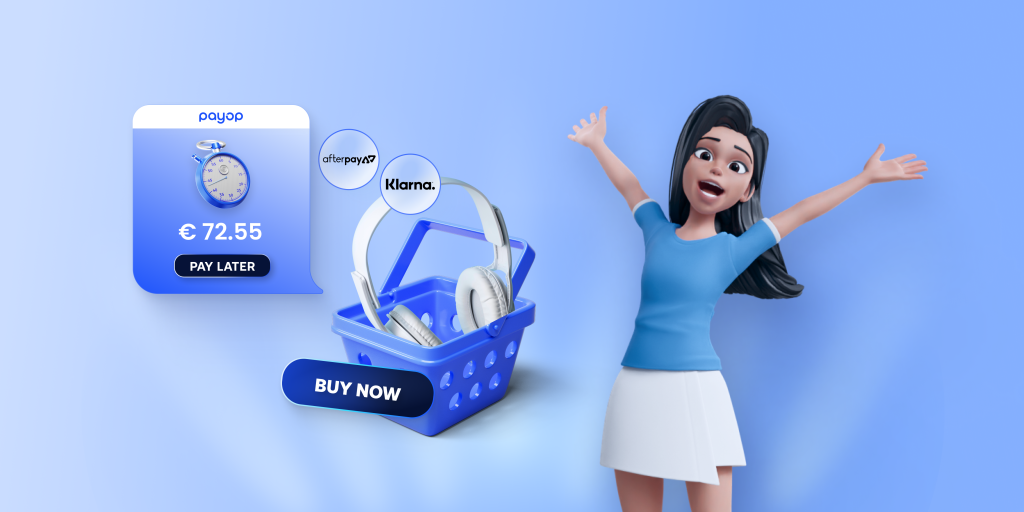
The BNPL payment trend has continued its rise in 2024, especially among younger shoppers looking for flexibility without the need for traditional credit cards. The ability to purchase and pay in instalments, often interest-free, is a huge draw for consumers. Retailers benefit, too, seeing a significant boost in sales.
European giants like Klarna and Afterpay dominate the BNPL space, especially in major markets like Germany and France. However, with this growth comes more control, as the EU has introduced the Second Consumer Credit Directive to ensure consumer protection.
Read about payment regulations in Europe.
Open banking

Thanks to the PSD2, banks now securely share customer data with third-party providers, opening up a new world of possibilities.
For businesses, it’s a game-changer. Open banking enables them to create customised payment experiences and flexible payment options, all while cutting out unnecessary intermediaries. Fintech companies are using this treasure trove of data to build smarter, more intuitive financial tools that make managing money easier than ever.
All Payop merchants can enjoy this technology with our Pay by Bank solution. It allows customers to make payments directly from their online banking: no data entry, higher security, and a quick checkout process.
Cryptocurrencies and CBDCs

While cryptocurrencies are gradually finding their footing in Europe, the big story in 2024 is the potential introduction of Central Bank Digital Currencies (CBDCs). Last year, the European Central Bank announced preparations for the digital euro, a government-backed digital currency designed to work alongside physical cash.
If successful, the digital euro could bring the best of both worlds — speed and efficiency like crypto, but with the backing of traditional financial systems. This payment trend could completely reshape how cross-border payments and everyday transactions are handled.
Green payments and sustainability

Sustainability is an increasing concern in Europe, and this is extending to payment practices. In 2024, several payment providers and fintech companies are introducing eco-friendly payment solutions. These include initiatives such as carbon footprint tracking on payments, where consumers can see the environmental impact of their purchases.
Additionally, some European banks and fintechs are launching “green cards” made from recycled materials and encouraging eco-friendly spending behaviours. These payment trends resonate particularly well with younger generations, who are more likely to consider the environment when making payment choices.
Top 5 payment methods in Europe
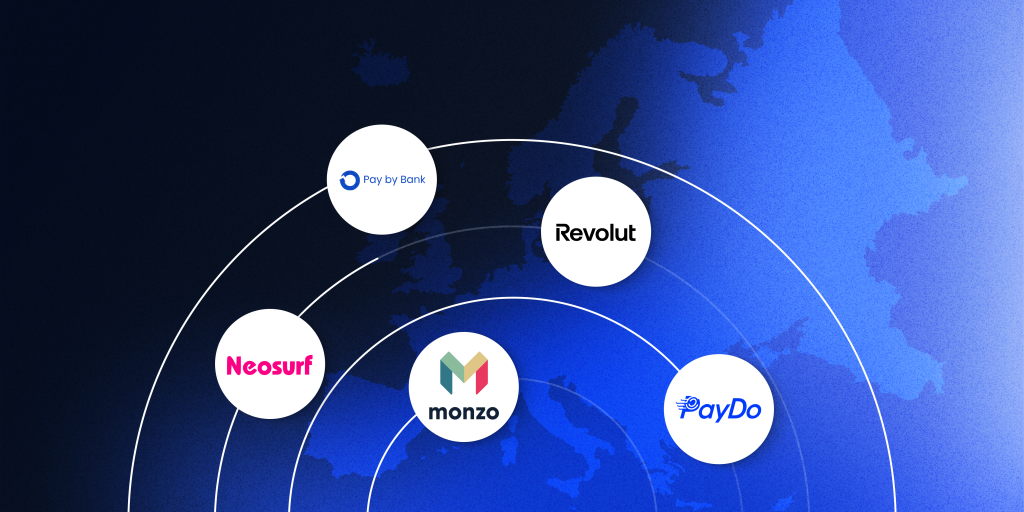
In 2024, several digital payment methods gained particular popularity among Payop users in Europe. These methods offer consumers and businesses more flexibility, security, and convenience:
Pay by bank
- What: Payop’s Pay by Bank lets customers make direct bank transfers for online payments in 13 countries, bypassing credit or debit cards.
- For whom: Consumers who prioritise security, speed and simplicity of paying directly from their bank accounts.
- Why popular: This method is favoured for its near-instant settlement and low fees, making it a popular option for e-commerce platforms in Europe.
Monzo
- What: Monzo is a digital bank in the UK providing users with an app-based banking experience, including easy payments and bill splitting.
- For whom: Tech-savvy, younger consumers prioritising mobile-first, user-friendly banking solutions.
- Why popular: It offers real-time notifications, fee transparency, and convenience for everyday payments.
Revolut
- What: Revolut offers multi-currency accounts and instant transfers, allowing users to handle domestic and international payments efficiently.
- For whom: Designed for users handling cross-border transactions, it is ideal for those who need flexibility with different currencies.
- Why popular: Revolut provides multi-currency support, fee-free international transfers, and an easy-to-use interface.
Paydo
- What: Paydo is an e-wallet that allows users to handle multi-currency transactions, pay bills, and send/receive payments across borders.
- For whom: Suits consumers needing easy cross-border payments, particularly in e-commerce and international services.
- Why popular: Paydo offers a simple interface, support for multiple currencies, and competitive fees for global users.
Neosurf
- What: Neosurf is a prepaid voucher system that allows users to make secure online payments without needing a credit card or bank account.
- For whom: Ideal for privacy-conscious users or those without access to traditional banking services.
- Why popular: Neosurf offers anonymity, security, and ease of use, making it a safe and accessible payment method for online shopping.
4 simple ways to adapt your payment page
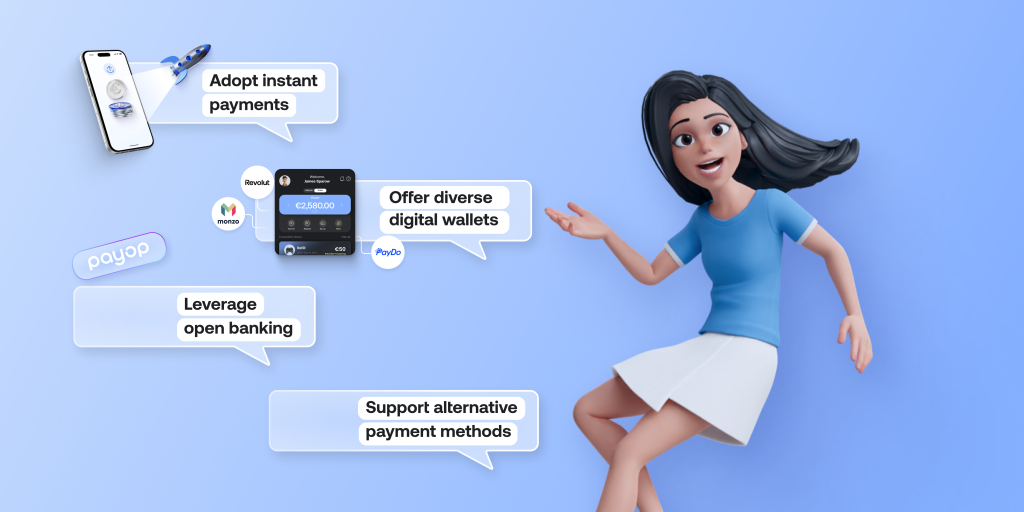
Your business must adapt to stay competitive, especially in a demanding European market. Here are simple ways how you can meet payment trends and expectations of your payers:
- Adopt instant payments: Implement SCT Inst to offer real-time, 24/7 payments for faster transactions and improved cash flow. This meets consumer expectations for immediate payments and helps you avoid delays in payment processing, providing a competitive edge, especially in e-commerce and B2B transactions.
- Offer diverse digital wallets: Accept popular wallets like Revolut, Monzo, and Paydo. These mobile-first payment solutions appeal to younger, tech-savvy consumers who prefer easy and quick transactions. Accepting multiple wallets can enhance customer convenience and increase sales conversions.
- Leverage open banking: Integrate open banking solutions to allow direct bank-to-bank payments, offering customers secure, low-fee alternatives to traditional card payments.
- Support alternative payment methods: Add payment options like Crypto and Neosurf, which offer flexibility, lower transaction costs, and appeal to customers who value security and privacy.
Partnering with a reliable payment provider like Payop makes all these tasks easier. With Payops 500 local and international payment methods and multi-currency support, you can stay ahead of trends. Contact our team at sales@payop.com to learn more.



